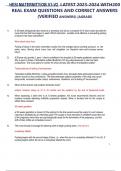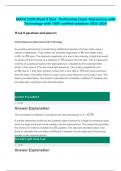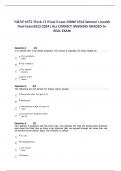Summary
Summary CIE A-level History 9489: Paper 4 • European option, Depth study 1: European history in the interwar years, 1919 41
- Course
- Institution
These revision notes follow the updated CAIE A-level History 9489 syllabus and scheme of work for for Paper 4: European option, Depth study 1: European history in the interwar years, 1919–41, Theme 1: Mussolini’s Italy, 1919-41. Easy to follow, clear and very detailed notes that cover all the ...
[Show more]












